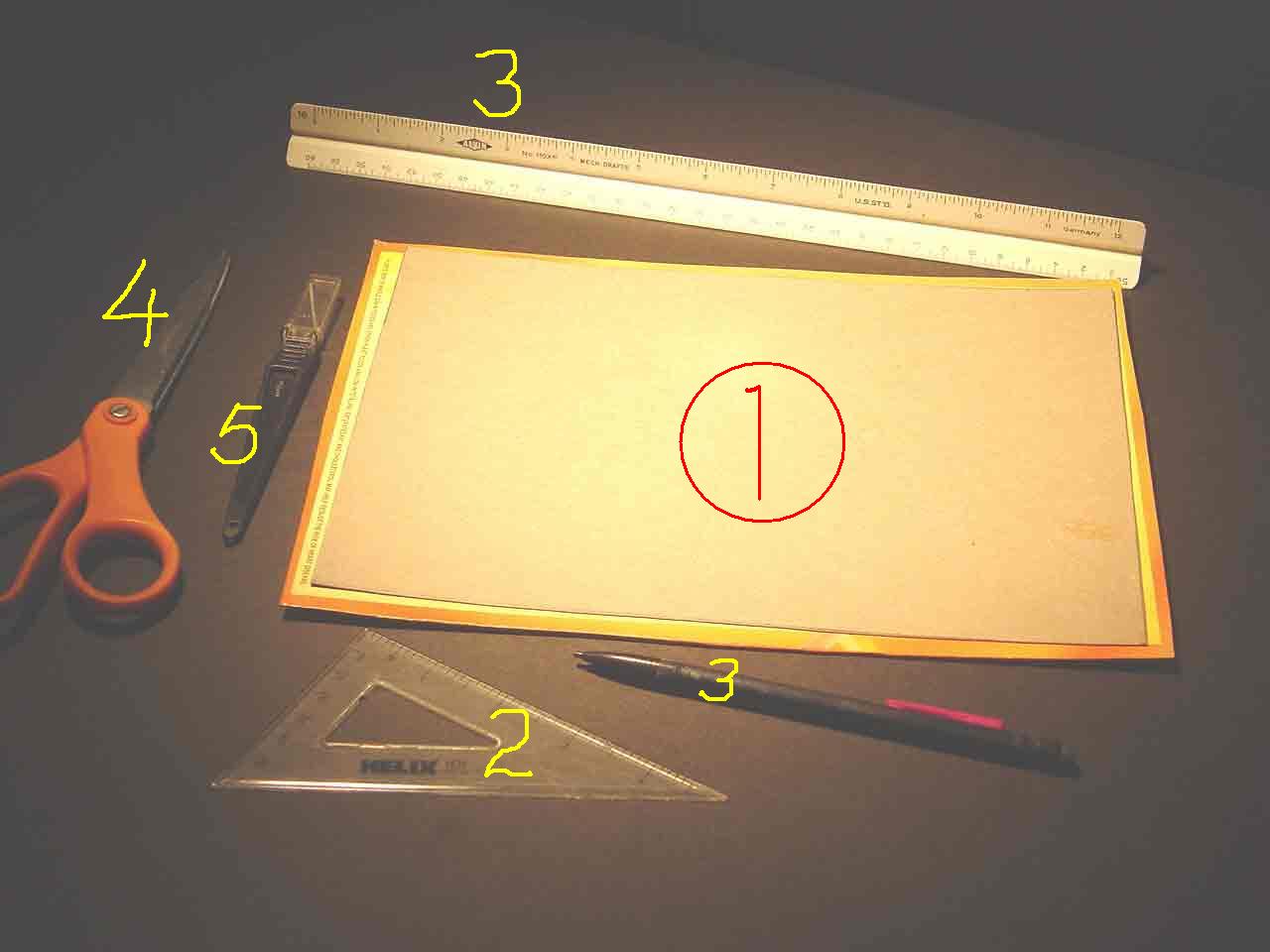--more--

After one piece of boxboard is trimmed using a suitable scissors (exhibit 4) it must be glued onto the other piece. It is essential that the claycoat side of both pieces are glued to each other, resulting in a single laminated piece with the kraft sides of the two original pieces permanently exposed, and the claycoat sides permanently concealed.
The fastest method of laminating thin boxboard is to apply paper glue to the claycoat side of the trimmed piece, and then pressing the trimmed piece, claycoat side down, firmly onto the claycoat side of the untrimmed piece. After the glue sets, the exposed claycoat border of the untrimmed piece should be carefully trimmed away using a sharp modeler's knife (exhibit 5).
Go to top of page